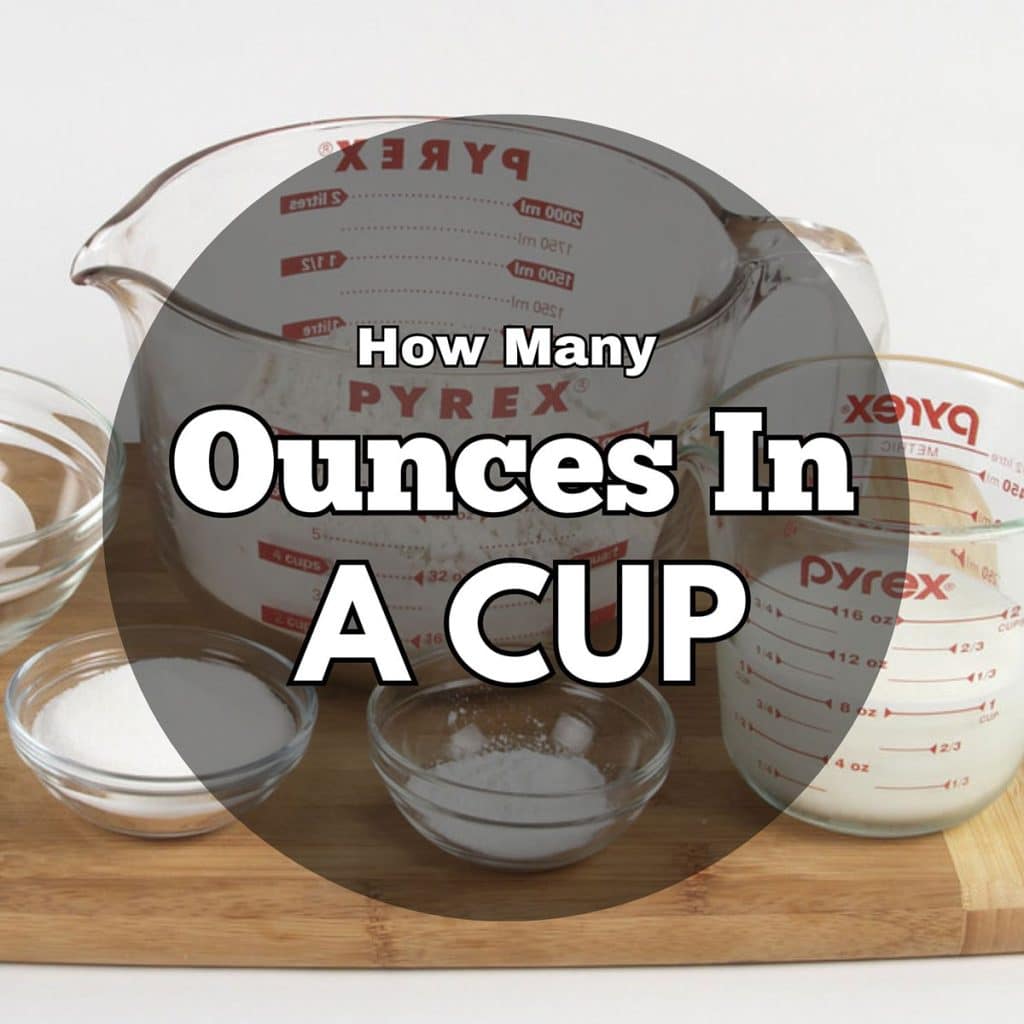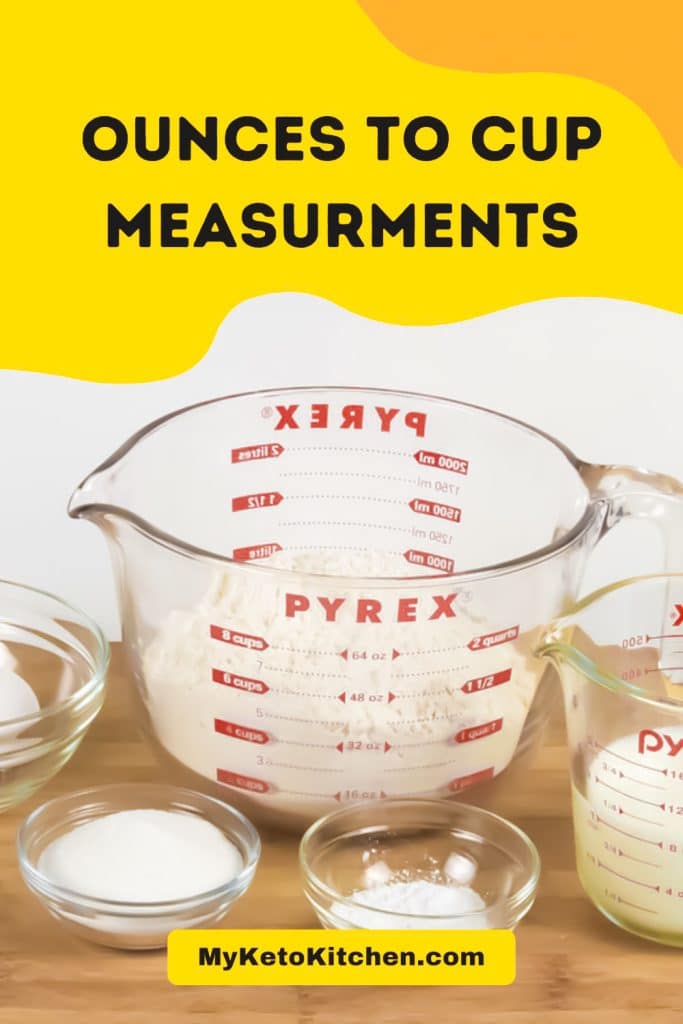Have you ever stumbled upon a recipe that calls for ounces and wondered, “How many cups is that?” Don’t worry—you’re not alone! Converting between ounces and cups is a common kitchen conundrum. Luckily, we’ve crafted this comprehensive guide to demystify these measurements and empower you to tackle any recipe with confidence.
Find out how many grams there are in a cup here.

Table of contents
- Why Precise Measurements Matter
- Ounces: Weight vs. Volume
- Cups: Your Kitchen’s Best Friend
- Ounces to Cups: A Simple Conversion
- Navigating the Conversion Chart
- Essential Measuring Tools
- Tips for Accurate Measurements
- US vs. UK Cups: A Note on Differences
- Converting Between Other Units
- Frequently Asked Questions
Why Precise Measurements Matter
Accurate measurements are the cornerstone of successful cooking and baking. Whether you’re whipping up a fluffy cake or a savory stew, using the right amount of each ingredient is crucial for achieving the desired texture, flavor, and consistency. This is where understanding the difference between ounces and cups becomes essential.
Ounces: Weight vs. Volume
The term “ounce” can refer to two distinct units of measurement:
- Fluid Ounce (fl oz): A unit of volume primarily used for liquids. Think water, milk, oil, or even honey.
- Dry Ounce (oz): A unit of weight used for dry ingredients like flour, sugar, nuts, or spices.
The key takeaway here is that while both are called ounces, they measure different things. This distinction is crucial when converting between ounces and cups.
Cups: Your Kitchen’s Best Friend
Cups are versatile kitchen tools designed for measuring both liquid and dry ingredients. They come in various sizes, typically ranging from 1/4 cup to 1 cup, and are often accompanied by measuring spoons for smaller quantities.
Ounces to Cups: A Simple Conversion
Liquid Ounces to Cups
- 1 cup = 8 fluid ounces
- ¾ cup = 6 fluid ounces
- ½ cup = 4 fluid ounces
- ¼ cup = 2 fluid ounces
Dry Ounces to Cups
The conversion of dry ounces to cups isn’t as straightforward due to variations in ingredient density. However, a general rule of thumb is:
- 1 cup ≈ 4.5 dry ounces
It’s important to note that this is an approximation. A kitchen scale is recommended for precise measurements of dry ingredients.
Navigating the Conversion Chart
To simplify things further, we’ve created two handy conversion charts: one for liquid ounces and one for dry ounces.
Liquid Conversion Chart (fl oz to cups, mL, Tbsp)
| Ounces (fl oz) | Cups | Milliliters (mL) | Tablespoons (Tbsp) |
|---|---|---|---|
| 2 | 1/4 cup | 59 | 4 |
| 4 | 1/2 cup | 118 | 8 |
| 6 | 3/4 cup | 177 | 12 |
| 8 | 1 cup | 237 | 16 |
| 12 | 1 1/2 cups | 355 | 24 |
| 16 | 2 cups | 474 | 32 |
Dry Conversion Chart (oz to grams, pounds)
| Ounces (oz) | Grams (g) | Pounds (lb) |
|---|---|---|
| 1/2 | 15 | 0.03125 |
| 1 | 28 | 0.0625 |
| 2 | 56 | 0.125 |
| 4 | 113 | 0.25 |
| 8 | 226 | 0.5 |
| 12 | 340 | 0.75 |
| 16 | 454 | 1 |
Essential Measuring Tools
Equipping your kitchen with the right tools will make conversions a breeze:
- Dry Measuring Cups: Ideal for flour, sugar, rice, etc.
- Liquid Measuring Cups: Designed with a spout for easy pouring of liquids.
- Measuring Spoons: Perfect for smaller quantities of both dry and liquid ingredients.
Tips for Accurate Measurements
- Level Off: Use a straight edge (like a knife) to level off dry ingredients in measuring cups.
- Eye Level: When measuring liquids, crouch down to ensure the liquid is at eye level with the measurement line.
- Use the Right Cup: Remember that liquid and dry measuring cups are not interchangeable.
US vs. UK Cups: A Note on Differences
A standard US cup holds 8 fluid ounces, while a UK cup holds 10 imperial fluid ounces. If you’re using a recipe from a different country, be sure to adjust your measurements accordingly. The Calculator Site provides a detailed explanation of these differences.
Converting Between Other Units
The world of kitchen measurements doesn’t stop at ounces and cups. You might encounter recipes that use grams, milliliters, or even tablespoons. Fortunately, there are plenty of resources available to help you with these conversions, including online calculators and conversion tables.
Frequently Asked Questions
It’s not recommended. Dry and liquid measuring cups are designed differently to ensure accurate measurements for their respective types of ingredients.
Spray the measuring cup or spoon with cooking spray before adding the sticky ingredient. This will help it slide out easily.
Use a kitchen scale for the most accurate conversion. For a rough estimate, you can also find online conversion charts.
There are 4.5 ounces of dry ingredients in a dry cup.
There are eight fluid ounces in a cup of water.
There are eight ounces in a cup of butter.




